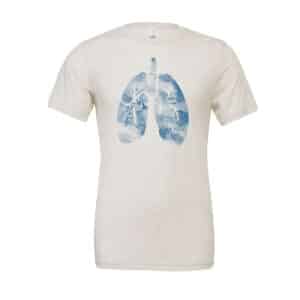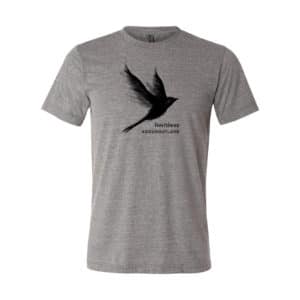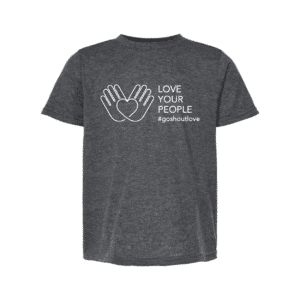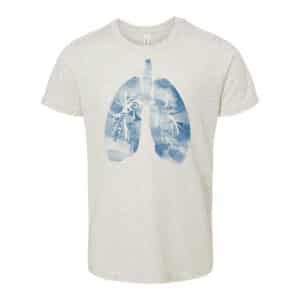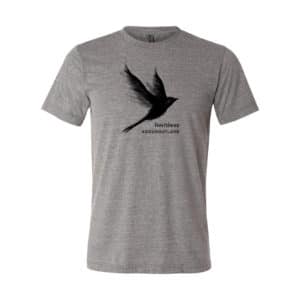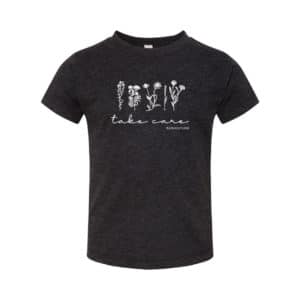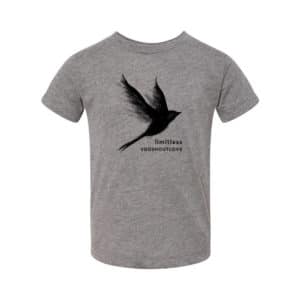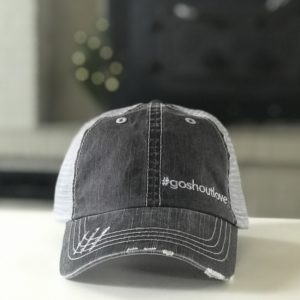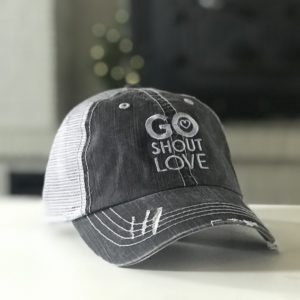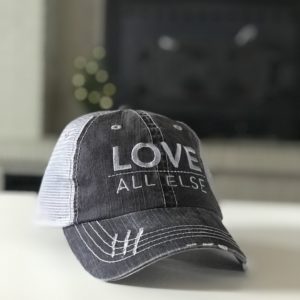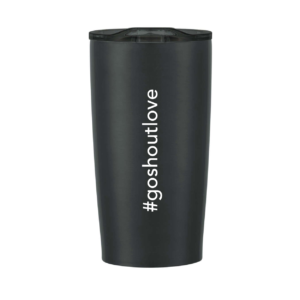Meet Paisley
Paisley is a caring, silly and fierce seven year old from Kaukauna, Wisconsin where she lives with her parents, Ashley and Joshua, and bothers, Noah and Brooks. Paisley loves singing, dancing, and snuggling with her little brother, Brooks.
Every purchase in October will go to help with the travel expenses needed for Paisley’s multiple monthly out of town appointments.
We invite you to watch her video, read her story, and subscribe to our podcast to listen to a conversation with her mom & dad.
In 2016, Ashley and Joshua Gritzuk eagerly awaited the arrival of their baby girl, whom they planned to name Paisley. However, Paisley’s birth came six weeks earlier than expected, catching them by surprise.
Confusion filled the delivery room when they saw that Paisley’s skin was covered in mysterious spots, leaving even the medical team perplexed. It was a puzzling and concerning situation.
While Paisley was gaining strength in the Neonatal Intensive Care Unit (NICU), the medical team decided to consult a dermatologist to unravel the mystery of these peculiar skin spots. Remarkably, Paisley’s NICU journey was shorter than anticipated, lasting only five days before she was deemed stable enough to leave. The Gritzuk family wasted no time in seeking answers from the dermatologist.
The dermatologist initially conducted a thorough examination, which included photographs of Paisley’s skin. Their initial conclusion was that these spots were congenital. However, due to the sheer number of them, there was a worrisome possibility that they could also affect her brain and spinal cord. Therefore, an in-person assessment was deemed necessary to determine the severity of the condition.
At just two weeks old, the family embarked on a journey to Milwaukee for an MRI to assess Paisley’s brain and spinal cord. Despite their hopes for a positive outcome, the results were anything but reassuring.
Following the MRI, the Gritzuk family met once again with the dermatologist to discuss the next steps. Ashley recalled the somber moment, saying, “When the doctor came in, you could tell something wasn’t right by her demeanor. We were told that the pictures did show that Paisley had these spots on her brain and spinal cord, along with indicators of hydrocephalus. Our hearts sank.”
While on the neurology floor, discussions began about the necessary course of action, as Paisley’s condition had been diagnosed as Neurocutaneous Melanocytosis, a rare congenital disorder characterized by the presence of congenital melanocytic nevi on the skin and benign melanocytic pigmentation of the leptomeninges (the membranes surrounding the brain and spinal cord).
As the couple grappled with this diagnosis, they had to make crucial decisions regarding Paisley’s treatment. One of the pressing matters was whether to insert a shunt to alleviate the swelling in her brain caused by hydrocephalus. After a second MRI, the neurosurgeon determined that a VP shunt was imperative to prevent further aggravation of the Neurocutaneous Melanocytosis due to increased pressure.
Fortunately, the surgery was a success, and within a few days, the Gritzuk family was able to return home, beginning a journey filled with challenges, but also with hope and resilience.
Two weeks later, the family made their way back to the neurologist’s office for a follow-up appointment, a crucial moment to delve deeper into Paisley’s condition.
Upon entering the room, the atmosphere was heavy with anticipation and anxiety. Ashley vividly recalls that the neurologist’s first words were a blunt reality check: “You know this is going to be hard, right?” It felt like a punch to the gut, setting the tone for a difficult conversation ahead.
The neurologist proceeded to paint a grim picture, laying out the array of potential challenges that could arise: the looming specter of seizures, the possibility of the spots morphing into cancer, spinal cord compression, and the relentless presence of headaches. As if that weren’t distressing enough, the couple received devastating news that Paisley’s prognosis was rather grim, based on data related to Neurocutaneous Melanocytosis. Essentially, they were told that the medical team would be navigating this complex disease alongside the family, learning as they went.
Reflecting on that fateful appointment, Ashley shares, “At the end of the appointment, we were informed that Paisley wouldn’t live to see her second birthday. We were encouraged to savor every good day, celebrate every moment of joy, and brace ourselves for the tough days that lay ahead.”
For a while, things appeared to be progressing smoothly, until Paisley experienced her first seizure at the age of six months. Concerned and bewildered, the family found themselves back at Milwaukee Children’s Hospital for an EEG (electroencephalogram), hoping for answers.
The EEG results did reveal some irregularities, likely stemming from the hydrocephalus, but the true cause of Paisley’s seizures remained elusive. With a sense of urgency, the family was provided with emergency medication and sent home, left to grapple with the uncertainty that hung over Paisley’s health.
Time passed swiftly, and soon, Ashley and Joshua celebrated Paisley’s second birthday. By this point, Paisley was gaining more independence and could express her pain. Around this time, she started experiencing random vomiting episodes. The couple grappled with a perplexing question – was it an illness or a symptom of her disease?
During painful moments, Paisley would clutch her head and cry. While the couple knew migraines were a symptom, other symptoms heightened their concern.
A few months prior to Paisley’s seventh birthday the family sought medical consultations and numerous MRIs to find the cause of Paisley’s worsening discomfort. Over time, Paisley showed signs of reduced reflexes and strength.
Ashley shared, “Paisley’s quality of life suffered. She was in constant pain, vomiting, missing school, and bedridden.”
It was suggested that Paisley’s shunt might be misaligned due to her growth. The neurosurgeon decided to revise it for better fluid drainage. They returned home on Easter Day, cautiously optimistic.
April 5th came around and things took a turn for the worst. Reflecting on that day, Ashley shares, “It was the scariest day of my life. Paisley woke up not feeling well and insisted on sleeping more. After some time, I went to check on her and she would not wake up. I had to sternal rub her and she would briefly open her eyes and fall back asleep. I feared she wouldn’t make it.”
The family rushed Paisley to the ER, where a CT scan confirmed enlarged ventricles. They were transferred to Milwaukee Children’s Hospital, and during the journey, Paisley’s condition worsened, requiring an emergency surgery within 15 minutes of arriving to the hospital. There, they learned her shunt had malfunctioned, necessitating an external ventricular drain.
After surgery she was transferred to the ICU.
While in ICU, Paisley woke up unable walk and struggled to speak. She worked with an occupational and physical therapist to regain arm movement but remained weak.
Ashley noted the change in Paisley: “You could see the fear in Paisley’s eyes. We watched her lose her carefree childhood essence. We didn’t see her smile for days until a therapy dog arrived.”
Paisley was eventually transferred to the neurology floor and discharged a few days later. However, she still struggled to walk, prompting outpatient therapy to rebuild her strength and balance.
After a couple of weeks, Paisley began showing familiar troubling signs. She returned to Milwaukee, where doctors discovered that the catheter of her VP shunt had become completely blocked by blood. A revision was performed, but Paisley’s condition didn’t seem to improve, and she once again became unresponsive later that night. The medical team decided to externalize her shunt, and Paisley woke up unable to walk yet again. She spent some time in the ICU to stabilize, awaiting the shunt’s reinsertion.
The decision was made while in ICU to create a pathway to the fourth ventricle to facilitate better fluid flow in Paisley’s brain, providing her with more time in case of another shunt malfunction. After an arduous eight-hour surgery, the couple finally received the news that the procedure was complete.
During the surgery, the plan was to insert a stint, but to the doctors’ surprise, Paisley lacked the necessary tissue in the cerebellum, preventing them from doing so. They also discovered some abnormal tissue that, fortunately, turned out not to be cancer but remained a cause for concern. On the positive side, the medical team successfully opened Paisley’s fourth ventricle. However, they anticipated that scar tissue would eventually cause it to close indefinitely, which was disheartening news.
Paisley stabilized from the surgery in ICU and after six days, the medical team managed to reinsert the shunt.
Today, Paisley is seven years old and is known for her caring, playful, and resilient nature. She loves singing and dancing and snuggling with her baby brother.
In just this year alone, Paisley has undergone nine surgeries to address shunt issues. The most recent surgery was due to an aggressive bacterial infection that required her entire VP shunt to be removed and externalized while antibiotics worked to clear the infection. After 21 days of being in the hospital on antibiotics she was able to have her VP Shunt replaced but this time it needed to be put in the opposite side of her head due to the original side being too frail from her previous 8 surgeries.
Ashley shared, “Since that surgery, Paisley has been doing pretty well. We are constantly on edge when she is upset or not feeling well. With her disease, there is no cure. The only thing we can do is treat the symptoms. She is still regaining her strength and dreams of the day when she can dance again. We finally feel like we are getting our daughter back.”
While the medical challenges Paisley faces are daunting, she has also been navigating the external aspects that make her unique.
“We affectionately call Paisley’s spots her ‘ladybug spots.’ People have asked if she has chickenpox, and we often receive curious stares. We wish more people would inquire about Paisley’s spots. We love discussing Paisley’s uniqueness and the kind of challenges she goes through. She is an exceptionally beautiful little girl. Recently, she asked how she could get rid of her spots. We always tell her that they make her unique and beautiful,” Ashley shared.
In the past month, Paisley had been experiencing a little weakness in her right hand which eventually spread to her entire arm and now has become completely flaccid. The family met with the neurosurgeon and conducted a full spinal MRI which showed a new lesion in her spinal cord. This lesion is causing compression to her spinal cord as well as increasing edema. Ashley shares, “Unfortunately this area is inoperable and we now had to add on Oncology. It was confirmed her Neurocutaneous Melanosis has progressed. It is inoperable and there is not currently a “cure”. We do know the gene that her disease originates from and so she is now starting an anti-cancer (MEK inhibitor) called Mekinist to try and slow the growth. Our hearts are completely broken with this news but we know from others who started this medication they have gotten at times a few good years. We are hopeful that Paisley too can have several good years on this medication.”
Time to get loud shouters!
Throughout the month of October we will be shouting loud for Paisley!
So click here to shop now where every purchase in October will go to help with the travel expenses needed for Paisley’s multiple monthly out of town appointments.
To help support kids like Paisley every month, click here to start a monthly subscription.


















